World War One: Wales' fallen honoured in Flanders
- Published
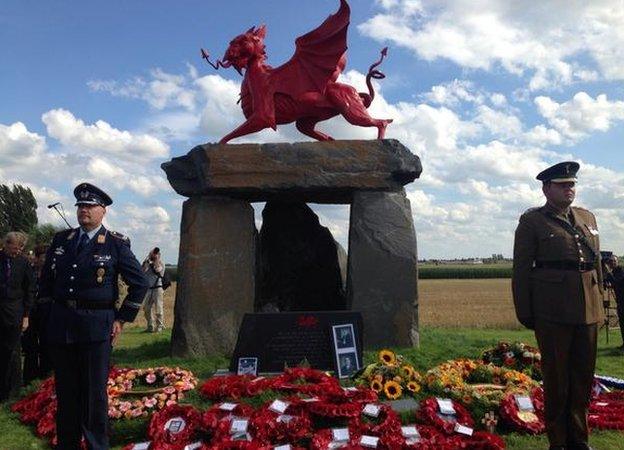
First Minister Carwyn Jones unveiled the monument
About 1,000 people gathered to see the unveiling of a lasting monument to Welsh soldiers who died in World War One in Flanders.
The cromlech built in Langemark, Belgium, has marked the 100th anniversary of the war's outbreak.
It followed years of campaigning by those who wanted a permanent dedication to the fallen.
It is estimated 40,000 soldiers, sailors and airmen from Wales died during the 1914 to 1918 war.
About 1,000 people gathered to see the unveiling in Langemark, Belgium
Langemark was at the heart of battle in 1917 as the Welsh advanced through the village on the first day of the Battle of Passchendaele.
Peter Carter Jones, co-ordinator of the Welsh Memorial in Flanders Campaign Group, told the service: "At a chance meeting on 2010 I learned there was no single welsh memorial for all the Welsh fallen.
"We wanted to change that. "This memorial's artist is from Tenby, the stones from Pontypridd and the dragon was made in north Wales. Every bit of it is Welsh.
"People not born yet will come here to remember the dreadful history this memorial represents. We will not forget them."
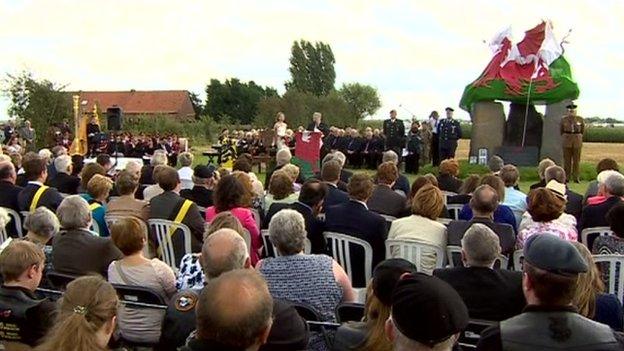
The memorial will be unveiled at the end of the service
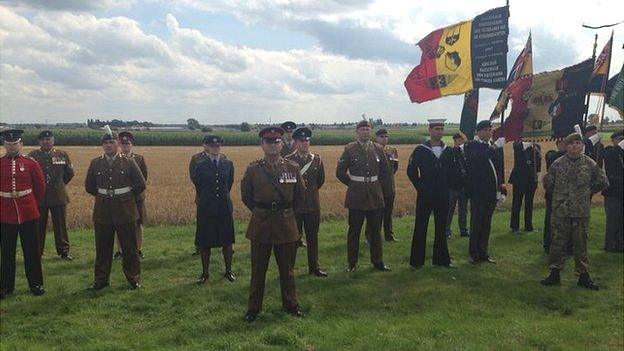
Members of all Armed Forces are represented at the memorial unveiling
.jpg)
Many people have turned out to watch the unveiling
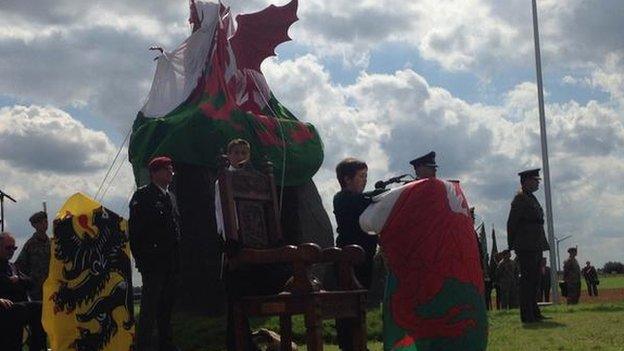
Gwydion Rhys, 11, from Bangor recounts the story of a local soldier who died in the Great War
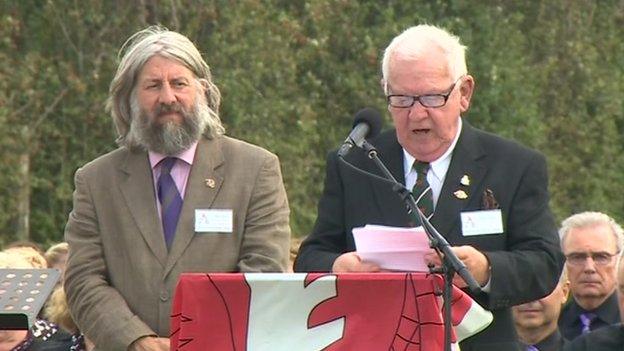
Peter Carter Jones, co-ordinator of the Welsh Memorial in Flanders Campaign Group, addressed the service
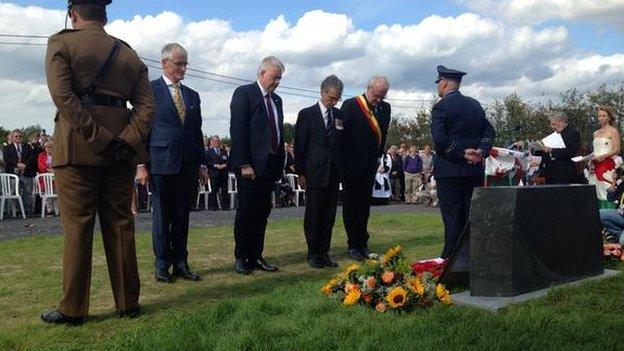
First Minister Carwyn Jones laid one of the wreaths after the unveiling
Fellow co-ordinator Erwin Ureel added: "The idea of a dragon memorial is easy, the hatching of that dragon takes much longer.
"The dragon you see before you is a fitting memorial to the battles fought here."
The monument is made of four Welsh blue pennant stones transported from Craig yr Hesg quarry, Pontypridd, and surmounted by a red bronze dragon, designed by artist Lee Odishow.
The sounding of the Last Post signalled the start of a minute silence. Heads bowed, there is no sound from the site, except for the birds
Falklands veteran Simon Weston who earlier said it was "very humbling" to be part of the ceremony, read The Kohima Epitaph before the Welsh flag was raised by army cadets.
Peter Carter Jones told the service how he came to learn of the lack of a Welsh national tribute
Minister president of the Flemish government, Geert Bourgeois, said he is proud local people played a part in making the memorial a reality.
He added: "Although we have escaped war for 70 years now, we must never forget how fast things can change."
First Minister Carwyn Jones told the service: "This memorial is the result of many years of hard work by dedicated individuals both in Flanders and of course in Wales.
"Indeed the appeal has caught the imagination of people around the world and this impressive sculpture demonstrates the importance with which we, in Wales together with our partners in Flanders hold the memory of those who sacrificed their lives a century ago."

BBC News reporter Natalie Crockett in Flanders
From the outset this could be any other European town. With its neat cobbled streets, beautiful buildings and quaint village-feel you could be forgiven for forgetting the horrors that happened in Ypres, Flanders, during the Great War.
But the town has not forgotten. There are museums dedicated to the Great War, plaques marking the sacrifice of the many countries which fought here, while cemeteries are dotted around the area marking the place where soldiers fell.
In the town centre the imposing Menin Gate serves as a memorial for those whose bodies were not recovered.
Every night at 20:00 hundreds of people gather to hear the sounding of the Last Post. Families and veterans, locals and visitors stand silent, craning their necks to get a glimpse of the ceremony which takes place under the iconic archway, and to pay their respects.

Among those killed at Passchendaele, was the poet Hedd Wyn, who was honoured with a posthumous chair at the 1917 National Eisteddfod.
Meurig Rees, who has travelled from Wales for the service, said: "There are memorials here in Flanders for many nations that fought in the First World War.
"There's one in France for the Welsh soldiers of Mametz, but I know that the campaign has been long running and the people of Flanders here thought it was important."
Marc Decaestecker, from Belgium, added: "It means a lot to me because the Welsh in 1917, they liberated us.
"They fought very heavy and that's why we want to do this."
Sian Rees, who also travelled to Belgium, said: "It's important to me because my grandfather took part in the Battle of Mametz down in the Somme... and although he came back alive I just want to honour his memory."
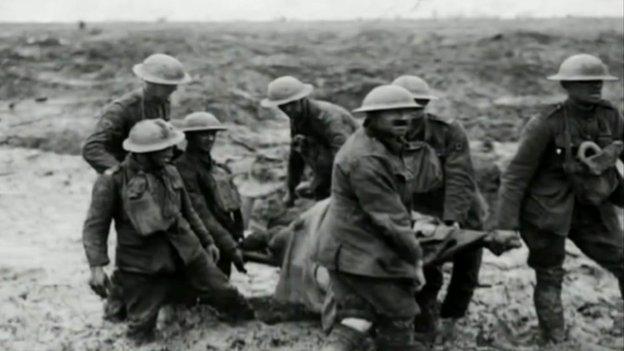
Langemark was at the heart of battle in 1917 as the Welsh advanced in the Battle of Passchendaele
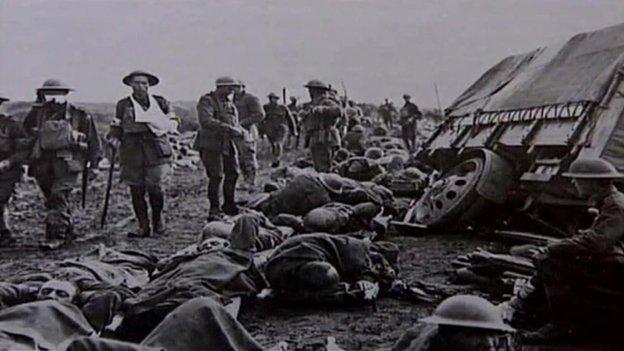
It is estimated 40,000 soldiers, sailors and airmen from Wales died during 1914-1918
- Published18 September 2013
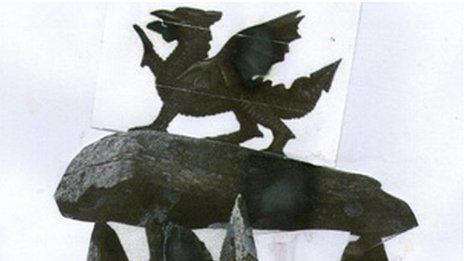
- Published11 July 2013
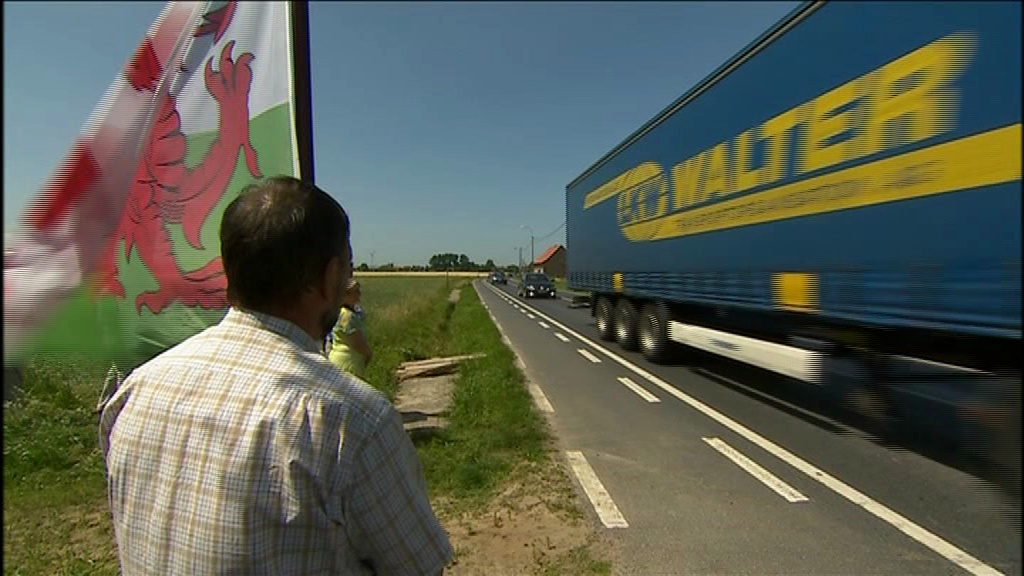
- Published12 February 2013
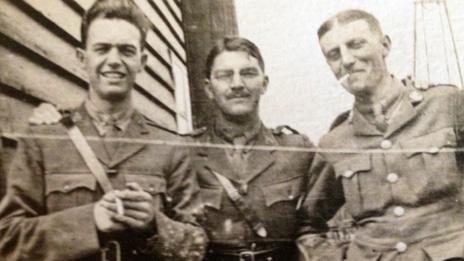
- Published29 January 2013
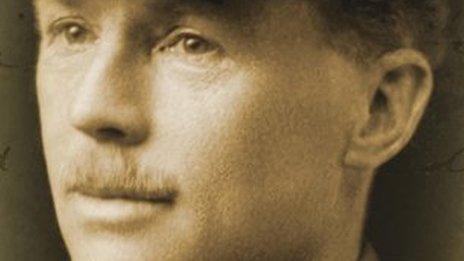
- Published11 October 2012

- Published2 March 2012
